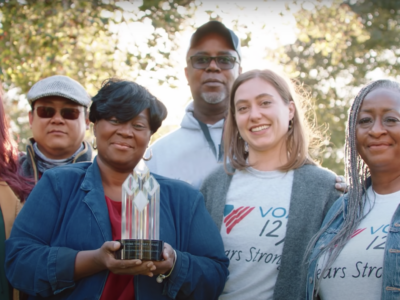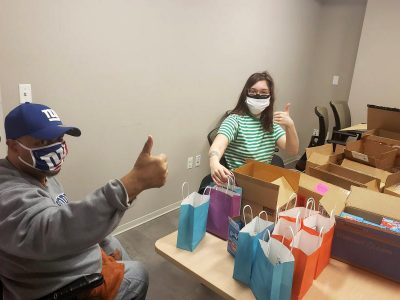Aras works on the Built for Zero Data Team where he designs, customizes, and implements data tools and analytic frameworks that help communities end chronic and veteran homelessness.
What is data analytics?
At a basic level, it’s collecting and looking at information systematically in order to make better decisions. For the work we do at Community Solutions, it involves helping communities use new or existing data on the services they’re providing to people experiencing homelessness to figure out what’s really going on. Zooming out can help you spot patterns in the data showing opportunities for improvement, like a bottleneck in your housing process. Zooming in allows you to identify whether changes to your system are having the desired result.
How does using data analytics help end homelessness?
Having up-to-date, reliable data on a community’s homeless population is critical to ending homelessness. You can’t end homelessness without having the data to track progress toward that goal and make sure you’ve reached it. You have to be looking at systems-level data around the number of people experiencing homelessness in your community in order to reach, and hopefully sustain, that measurable end state.
Folks on our team often note that solving homelessness isn’t a technical problem— it’s a complex problem. So, it’s not like baking a pie or just following a recipe; it’s more like raising kids. There’s no fixed blueprint.
If I’m looking at one person experiencing homelessness, there’s a really solid evidence base of best practices to resolve that person’s experience of homelessness permanently. But those best practices for individual people don’t automatically add up to communities ending homelessness for everyone— there are countless externalities that complicate things. That’s a systems problem, and you need to take a broader view informed by data to be able to solve it.
Data analytics is also the key tool for helping us understand whether we’re making meaningful progress nationally. It gives our Built for Zero team the information we need to know when and where we might need to course correct in terms of our own strategy.
What kinds of data are communities collecting?
A big part of the work we do is pushing communities to improve the ways they keep track of data. We’ve been coaching each community to create a by-name list of all those who are experiencing homelessness in their communities and update it continuously— a real-time, person-specific accounting.
This list has become a core component of what the federal government and our sector call a coordinated entry system, which is a protocol for helping communities make smarter, more consistent decisions with housing resources. A good by-name list can give you a sort of instrument panel— like your car dashboard— to figure out how you’re doing and where you might want to make some tweaks. It can also help you understand the impact those tweaks are having on your overall progress.
What happens after you look at the data?
Data analytics works in tandem with quality improvement, another core skill we use here. Imagine data analytics as the flashlight that helps identify trouble spots, and then quality improvement is more like a hammer or a wrench— it’s a tool to test, build, and improve new solutions.
What are some of the tools communities use to make sense of their data?
We just switched our communities over to a powerful, cloud-based data visualization platform called Tableau, which is an industry standard for data analytics. By shifting to this more robust platform, we’re offering community teams more engaging visuals and a more powerful analytic tool kit. It’s unlocked the potential to do much more scalable data analytics work, and it’s already empowering communities to create more flexible and locally customized tools.
Data analytics is also the key tool for helping our team understand whether we’re making meaningful progress nationally. It gives our Built for Zero team the information we need to know when and where we might need to course correct in terms of our own strategy.
This Q&A with Aras Jizan was originally published in Community Solutions' 2017 Annual Report.




